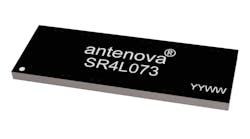This article is part of the TechXchange: Device-Level Antenna Selection Considerations.
Although there are multiple factors that contribute to the success of an electronic design, the wireless performance is directly related to the antenna design, the enclosure, and a good PCB layout. It’s not rare to see similar designs with similar silicon have completely different wireless operating parameters based on their layout and antenna-design practice.
This TechXchange series will explore best practices, layout guidelines, and antenna-selection considerations to get the widest RF range with a given amount of power. A well-designed antenna ensures optimum operation of the wireless product in question. The more power it can transmit, the larger the distance it can cover, and the higher the reception sensitivity is, the better. Antenna choice should be based on the application, available board size, cost, RF range desired, and today can even address directivity.
A well-tuned radio works with minimal radiation incident at the antenna, and the RF layout along with the radio matching network should be optimized to ensure that most of the power from the radio reaches the antenna, and vice versa. Poorly laid out components can also prove detrimental to a circuit’s RF performance, as noisy, magnetic, or moving components can detune and draw energy away from the antenna. The material of an enclosure can also impact wireless performance, as metallic and even some plastic enclosures can have a dampening impact on performance.
For more TechXchange articles on this topic CLICK HERE.
To see TechXchange pages on other topics CLICK HERE.

